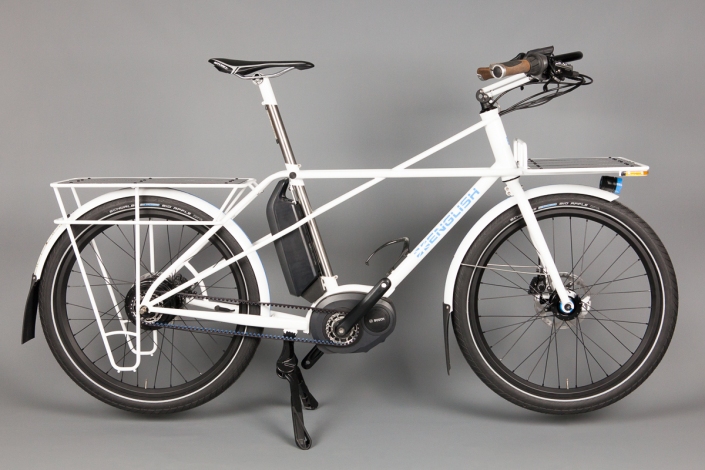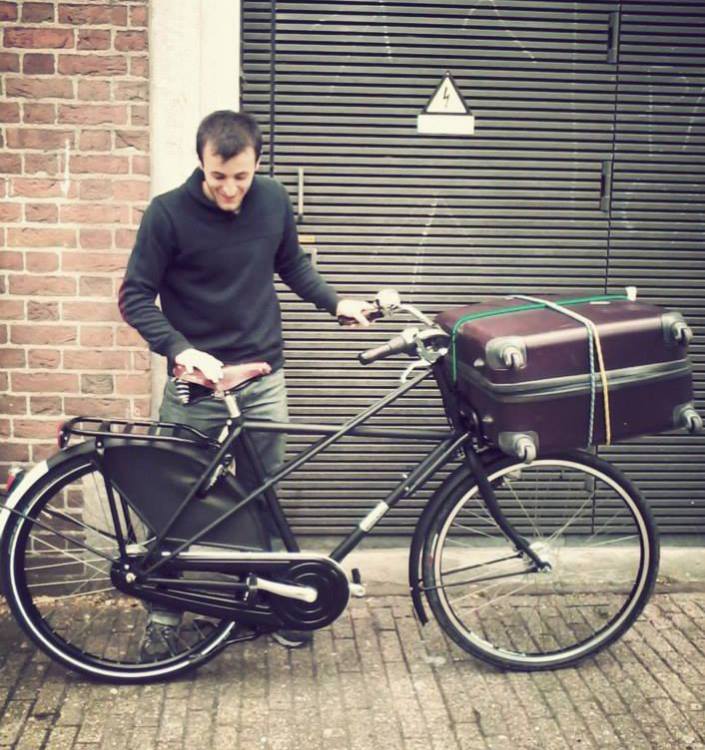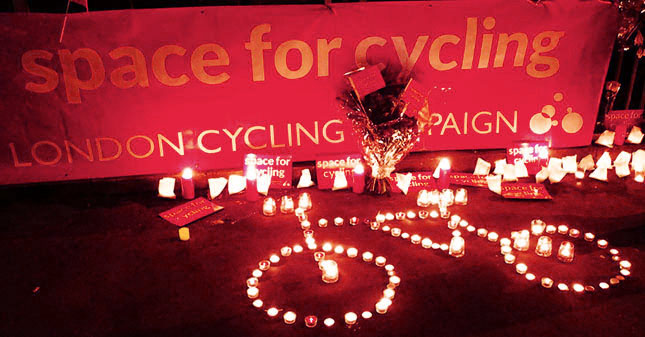Design
Favourite Quotation and Favourite Bike
As any bike rider will know, friends and family love to buy you books about bicycles and cycling. As a child of the internet age, I am particularly appreciative of these gifts because they so frequently open my eyes to things that I might not have otherwise encountered. From the whimsy of the NYC Bike Snob series and the semi-serious rules of the Velominati, to the wonderful and captivating histories like Pete Jordan’s Story of the Amsterdam Cyclist, there is certainly no shortage of quality bike-related literature. I must admit that I am also quite partial to the occasional illustrated book as well; here, though, the pictures do the talking, and they can give fascinating insights into the dreams of designers and the lives of riders.
In spite of the wealth of literature, there is, however, one passage that stands head and shoulders above the rest in terms of the way that it captures how I feel about riding a bike. The passage I’m referring to is succinct and refined, and even contains a politely restrained little jab at motor vehicles. It comes from Elizabeth West’s Hovel in the Hills (1977), and goes as follows:
When man invented the bicycle he reached the peak of his attainments. Here was a machine of precision and balance for the convenience of man. And (unlike subsequent inventions for man’s convenience) the more he used it, the fitter his body became. Here, for once, was a product of man’s brain that was entirely beneficial to those who used it, and of no harm or irritation to others. Progress should have stopped when man invented the bicycle.
The bicycle has, of course, been reinvented to varying degrees since the first recognisably familiar double-diamond ‘Safety Bicycle’ appeared in the 1880’s. And this is probably a good thing…

The subtitle of West’s book is ‘An account of the Simple Life’, and she clearly believes that the humble bicycle is a natural part of a streamlined existence. That said, however, modern times call for modern bikes, and in a world of cars we need a bicycle that is more than just a dandyhorse-style toy for the posers to pootle about on. What is called for is a rugged transporter; something fast and strong, but also comfortable and easy to use.
What is called for is something like this:

This is a handmade custom build by Rob English. Dubbed the No-car-kitty-cargo, it really has everything that a good cargo bike needs to serve as a wholly adequate replacement for a car. In terms of design, it is undoubtedly complicated, but without ever having seen one in the flesh I can be fairly certain that the ride would be both simple and pleasurable. Big tyres, intuitive gears, automatic electric assist, carbon belt-drive, intelligent weight distribution – all these parts come together in a beautiful harmony to make this bike probably the most advanced of its kind in the world. It takes an independent pioneer like Rob English to bring together so many different elements and blend them so expertly to produce such a feat of engineering.

As a handmade bike, it doesn’t really have a price tag, as such. However, you can expect to pay upwards of $10,000 for something like this (if you are prepared to join the 3 year waiting list, that is). If I had the readies, I’d put my name down immediately, but sadly the modest stipend of a PhD student doesn’t stretch quite so far. *inconsolable weeping*
Some of you might be curious as to how I can be so sure that a bike I have never ridden is really worth raving about. Well, apart from my faith in English’s workmanship, and the no-expense-spared approach to components that he is using, I actually ride a bike very similar to his one already. In fact…

Of all the bikes that I have owned, this one is by far the greatest. I intend to do a thorough analysis of what makes this bike excellent in due course, but for now it will suffice to say that Rob English has determined the very few ways in which it could be improved and has built them into what I believe to be the ultimate city bike. In short, his bike has a greater load capacity, elegantly integrated electric assist, wider tyres, titanium tubing (in places), and a carbon belt drive. The only places where I believe my bicycle to have the edge are in the Brooks B67 saddle and matte paint job departments…
In conclusion then: while I admire Elizabeth West’s wholehearted endorsement of the humble bicycle, I am pleased to see that bicycle technologies and innovations are still keeping up with the times, and still providing practical, safe, healthy, and environmentally-friendly transport solutions for millions of people around the world, even after all these years.
Liveable Cities and Desire Lines: Urban planning perspectives from Denmark’s Bicycle Ambassador
The focus on re-establishing more liveable cities continues unabated. The primary problem however is that 85 years of traffic engineering revolving around the car has failed miserably. It’s time for modern thinking, and good design can help.
Historically, streets were human spaces, so why don’t we still design them in accordance with the desire lines of their citizens? The following talk, given by Mikael Colville-Andersen, makes the case for using basic design principles instead of engineering as the surest route to developing thriving, human-centred cities.
Colville-Andersen is an urban mobility expert and CEO for Copenhagenize Consulting. He is often called Denmark’s Bicycle Ambassador but has learned the hard way that this title is a dismal pick-up line in bars.
Colville-Andersen and his team advise cities and towns around the world regarding bicycle planning, infrastructure and communication strategies. He applies his marketing expertise to campaigns that focus on selling bicycle culture and bicycle transport to a mainstream audience as opposed to the existing cycling sub-cultures in particular with his famous Cycle Chic brand. Colville-Andersen gives talks around the world about bicycle culture, design, and social media.
Those who are familiar with TED talks will know that they are synonymous with quality and intelligent commentary. My favourite bit of this particular talk begins at 5:27 and considers Copenhagen’s approach to the “desire lines” of its citizens. After watching this segment, just think about how other cities around the world might be quicker to punish (rather than observe) their citizens in cases where they routinely flout the law – which approach do you suppose is better?
Upgrade London’s CS2 to Continental Standards – call to arms
Link Posted on Updated on
Upgrade London’s CS2 to Continental Standards – call to arms
Five cyclists have died in the last nine days on the streets of London.
People are justified in their anger that cycling infrastructure is too sporadic to offer any effective protection. Please help by sending a message to London’s mayor to let him know how you feel.
Coverage from the BBC paints a fuller picture

Related articles
- Cycle deaths leave London bewildered (bbc.co.uk)
- Cyclist killed on cycle superhighway (bbc.co.uk)
- Boris Johnson called on for cycle superhighway safety measures after Bow cyclist death (express.co.uk)
- One Step Forward, Two Steps Back: What Next for Cycle Safety in London? (sustainablecitiescollective.com)
A post about roundabouts (of all things)
Video Posted on Updated on
The Dutch have done it again; as usual paving the way with an innovation that is as beautifully engineered as it is practical. Constructed between Eindhoven and Veldhoven, the new ‘hovering’ roundabout separates bicycles from the motor vehicles below, harmonising high-functionality, aesthetic appeal, and plain old-fashioned genius.
My initial reaction of awe quickly turned to irritation as I realised that I don’t live in The Netherlands any more. This morning’s emotional roller-coaster took yet another turn as jealously turned to joy when I caught wind of plans for more conventional Dutch-style roundabouts to be trialled in the UK: http://www.bbc.co.uk/news/uk-england-london-22347184
For those of you who are unfamiliar with how Dutch roundabouts work, check out this brilliant video from our friends at NL Cycling: http://www.youtube.com/watch?v=XhqTc_wx5EU
Dutch roundabouts are intuitive to use once you understand how the shark-teeth markings on the road indicate priority, and there’s really nothing to it. Roundabouts can be pretty dangerous and intimidating places for cyclists in the UK, but in The Netherlands they are a breeze. Transport For London (TFL) has raised concerns that the Dutch design might reduce the speed of motorised traffic. Personally, however, I don’t see that as a cause for concern, but rather yet another benefit of a concept that prioritises the most vulnerable road users.
If the UK is realistic about meeting emissions targets, combating sedentary lifestyles, and generally improving the nation’s health then a great way to do this is to incentivise cycling by introducing measures to protect and prioritise people on bikes. It frustrates me when such a simple and elegant solution to so many of our country’s problems exists within tantalising reach but remains obstructed by a system that perpetuates antiquarian notions of cars as symbols of progress and success.
Russell Brand was wrong to tell the youth not to vote; we need to vote, and we need to vote for some serious change if we want to see it happen in our lifetime. It’s hard to believe, but until the mid-seventies the Dutch had a car-centric culture and a government who gave little or no consideration to bicycle infrastructure. The people got angry, voted for a left-wing government, and good things started to happen; laws changed, cycle paths were build, and road deaths decreased dramatically. I really don’t understand why we can’t do the same.
